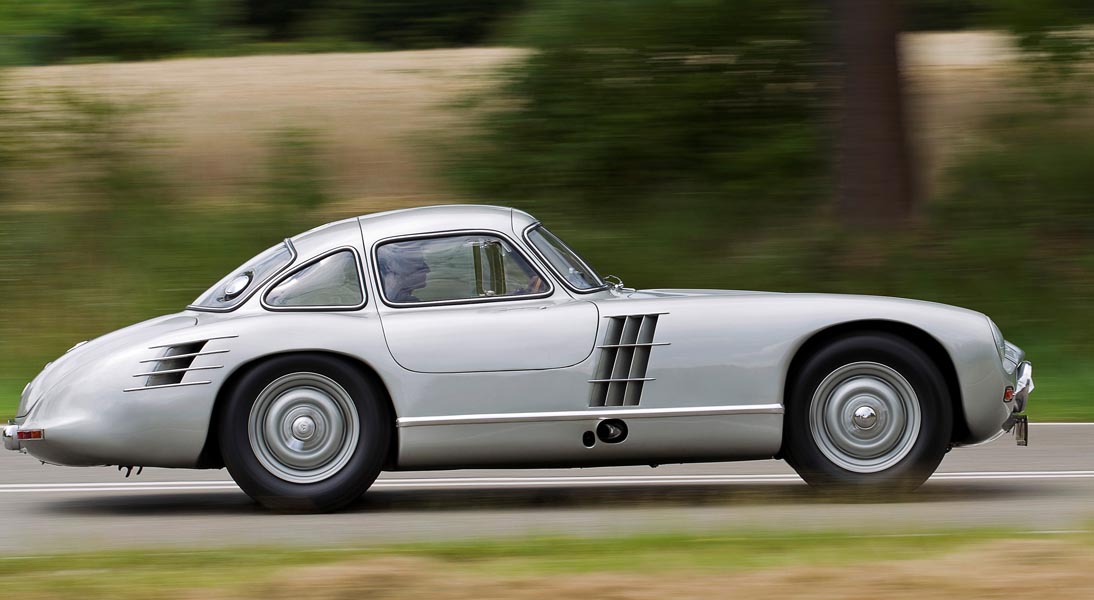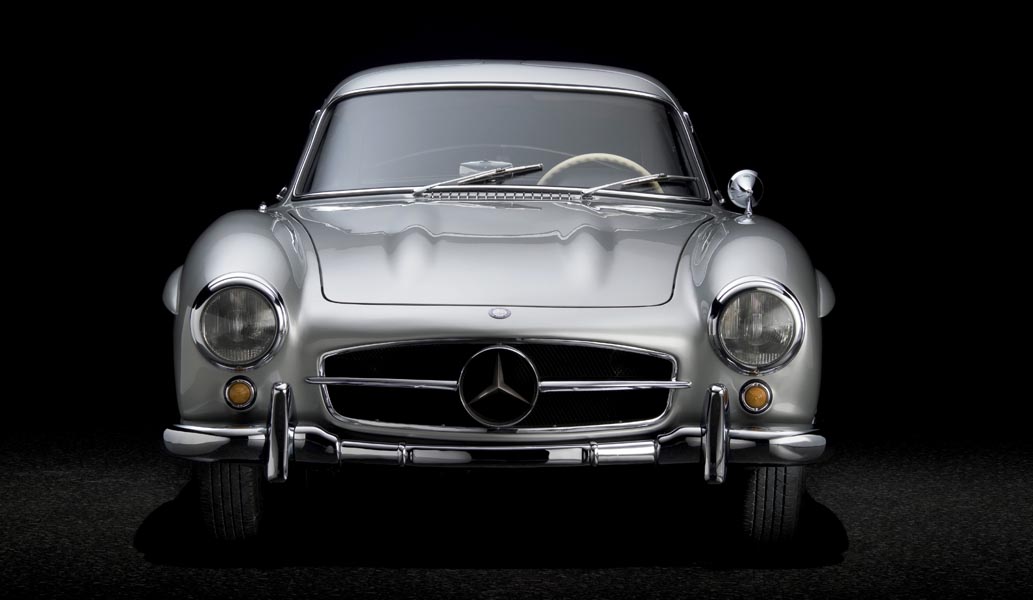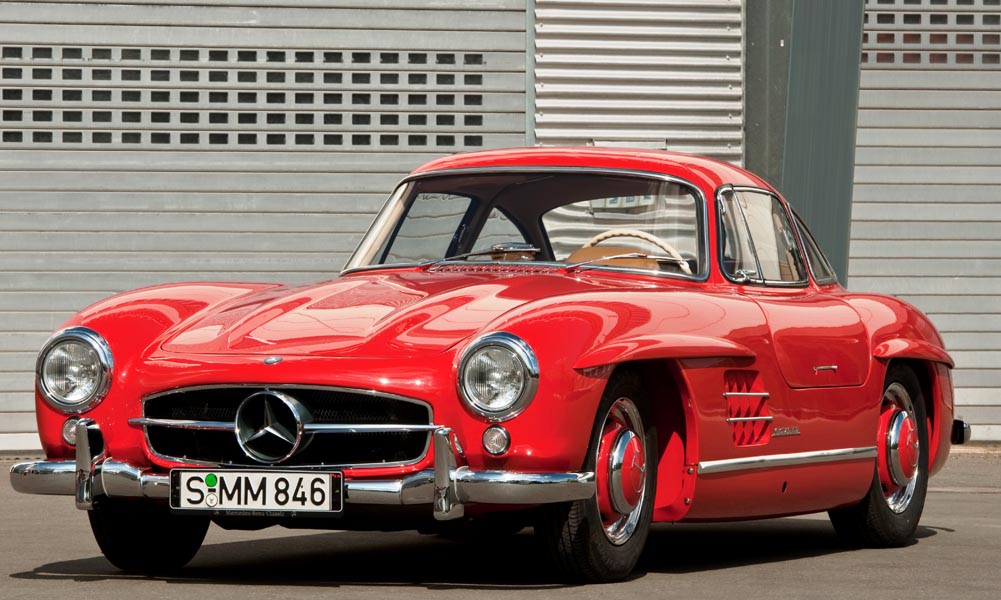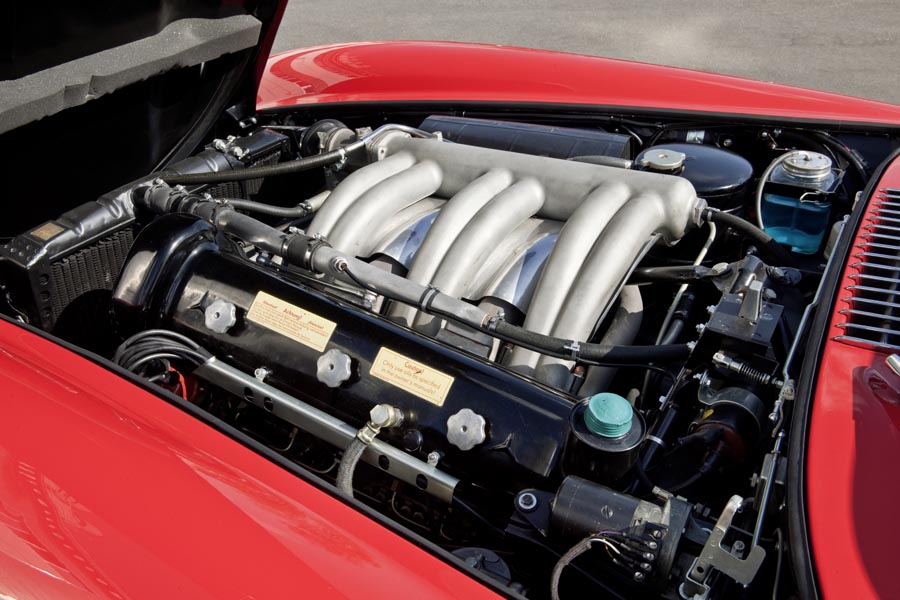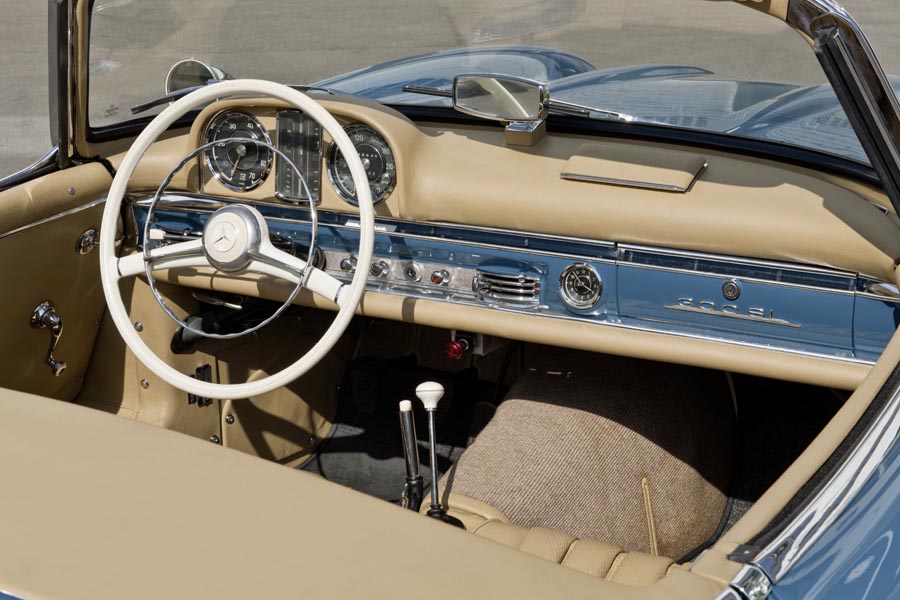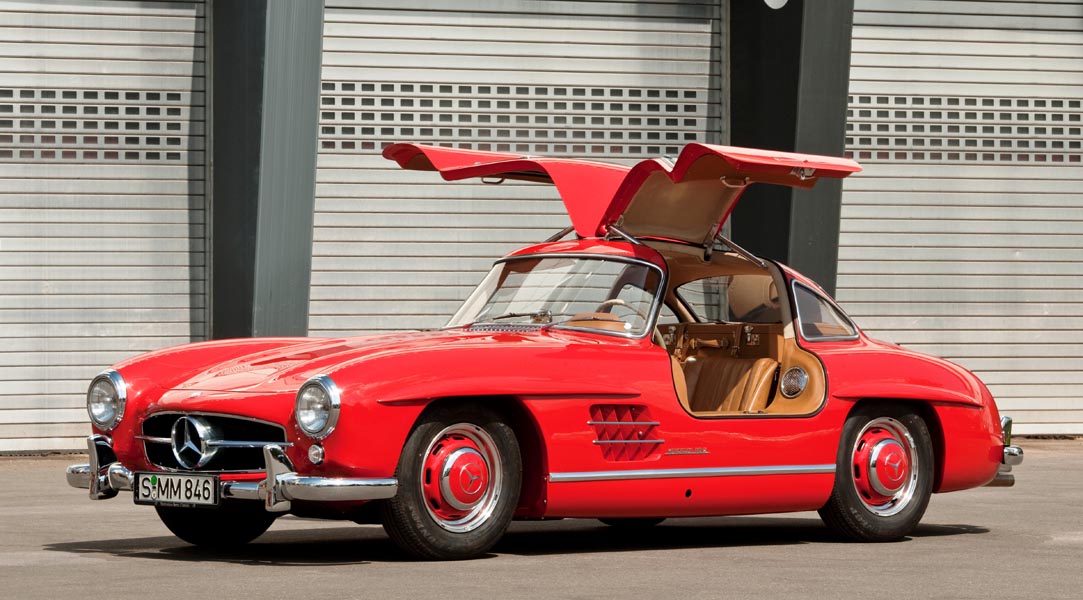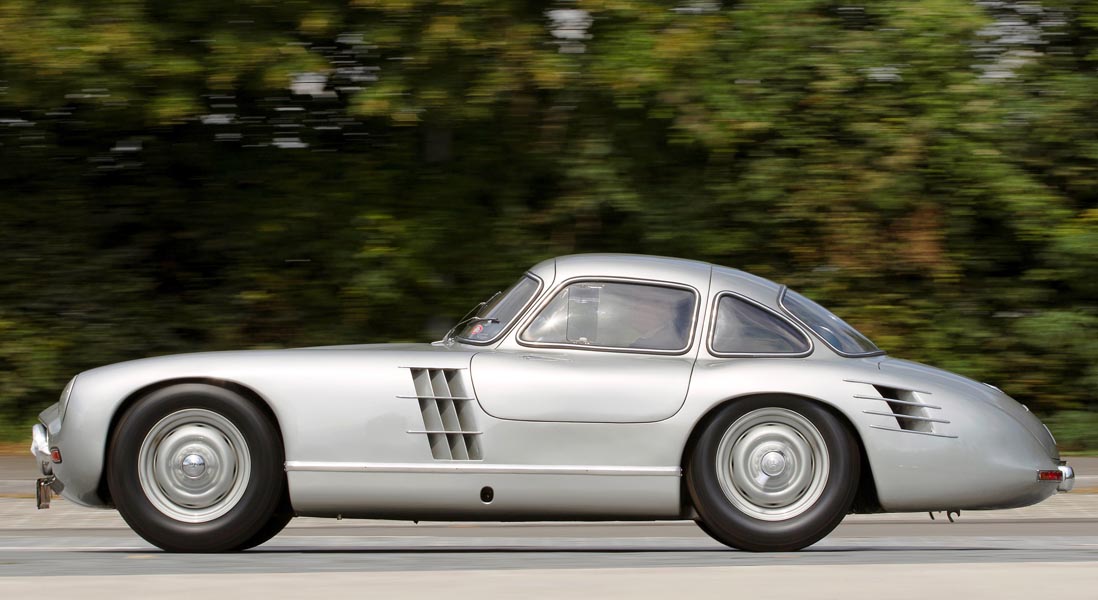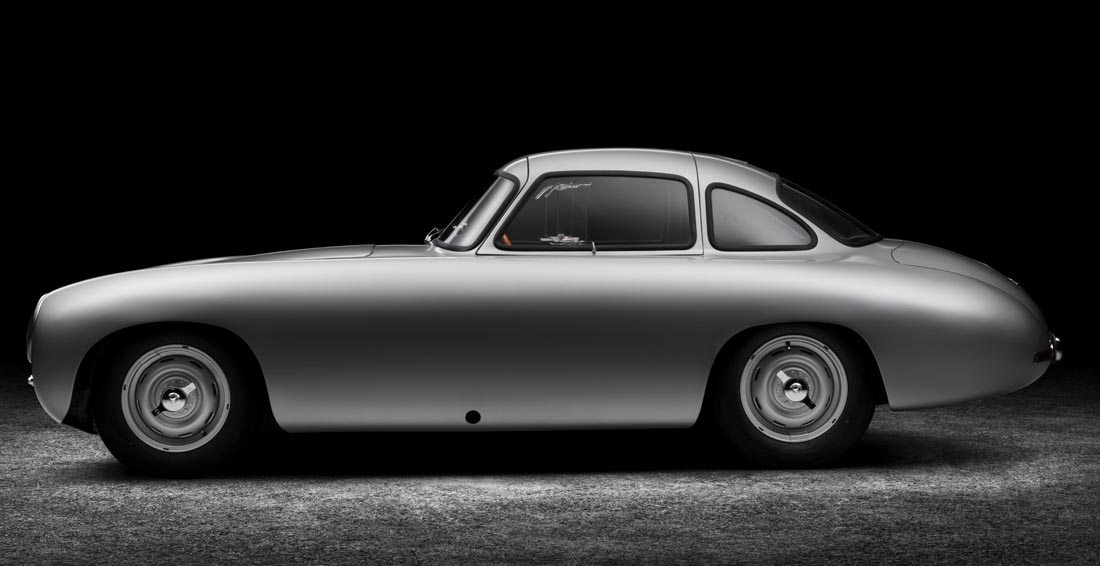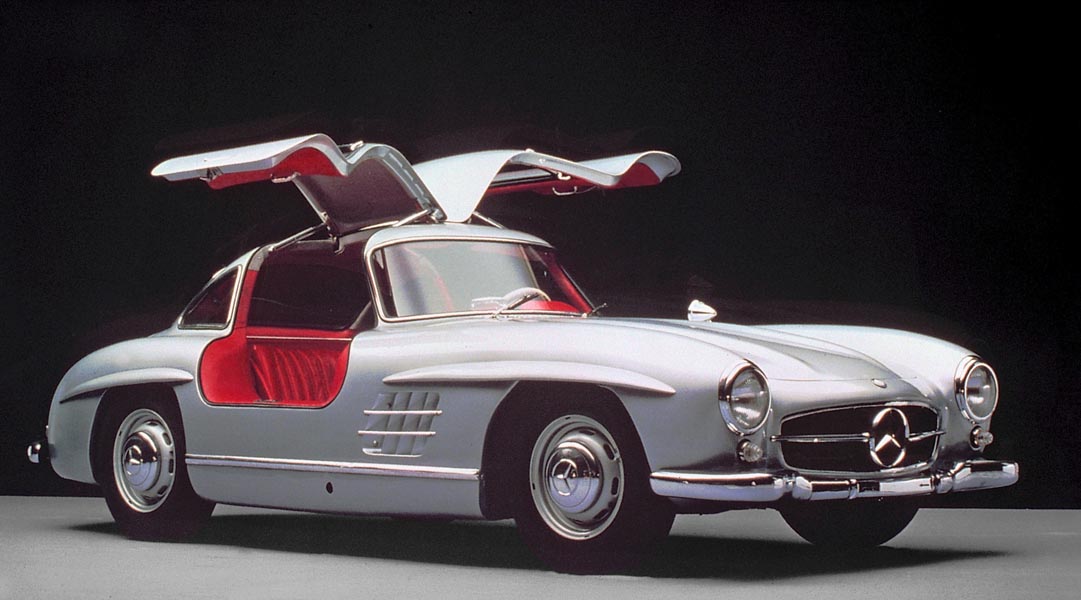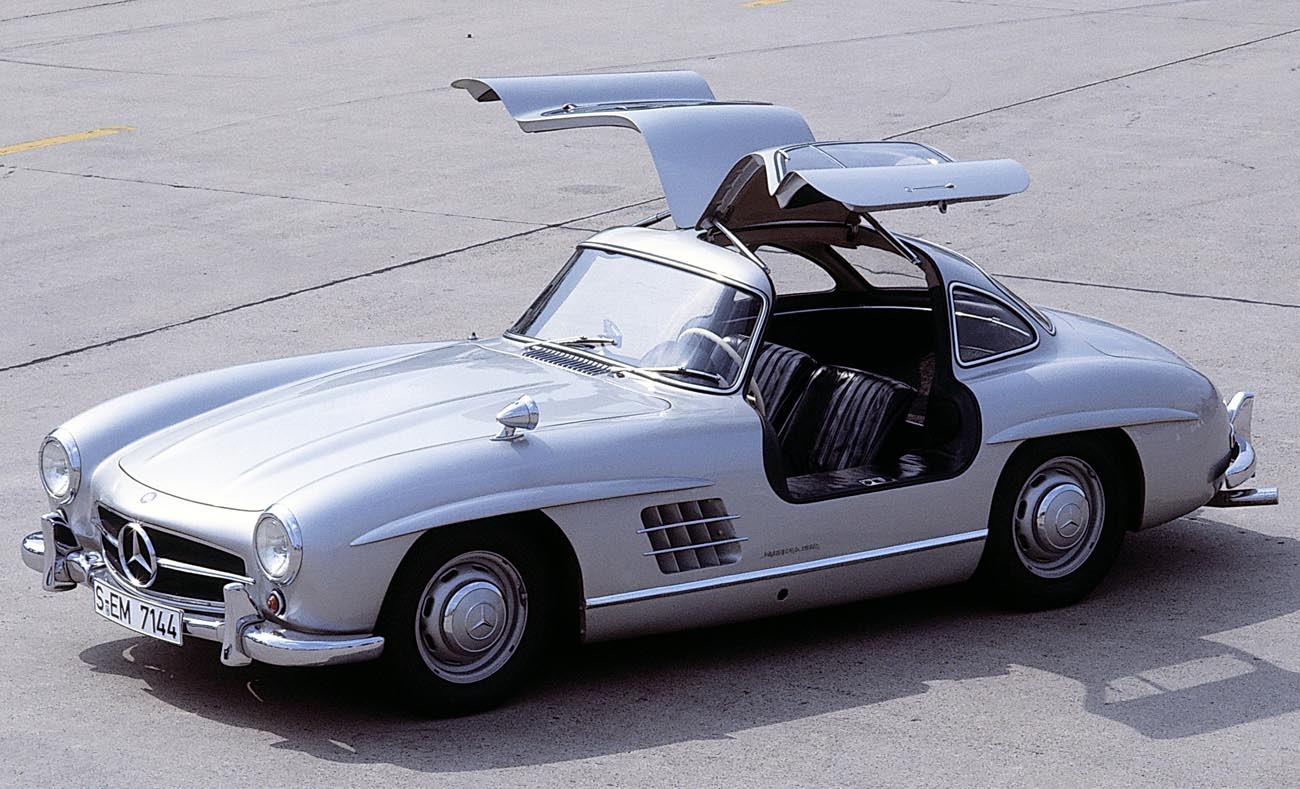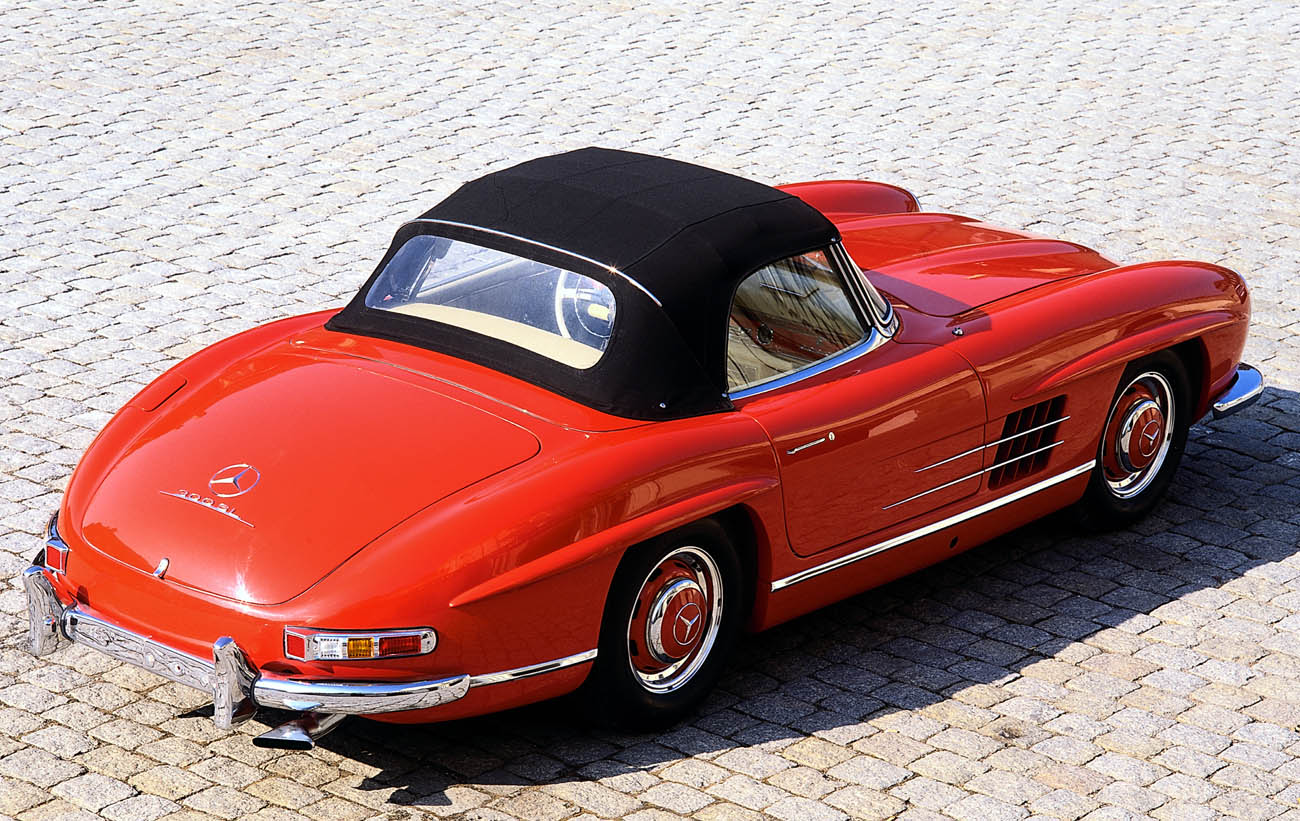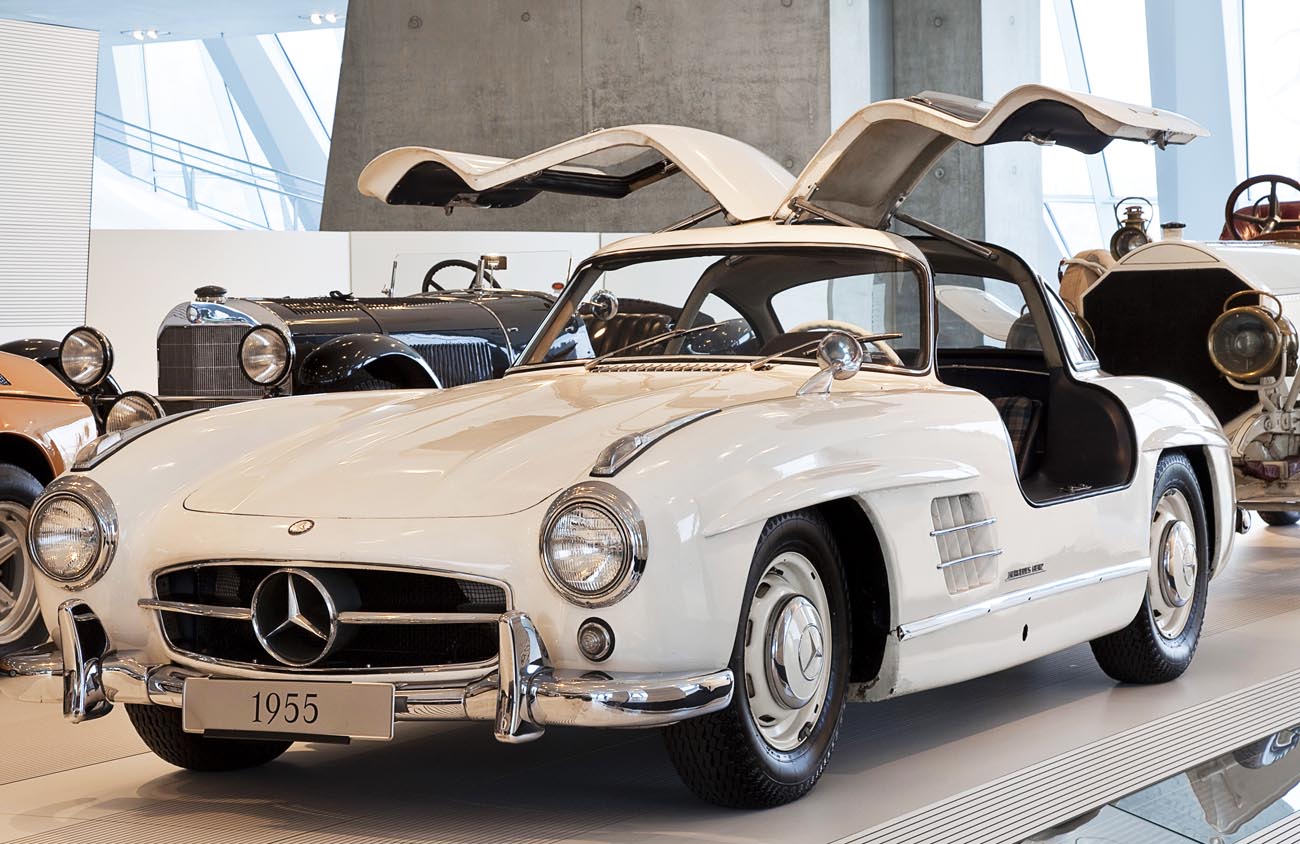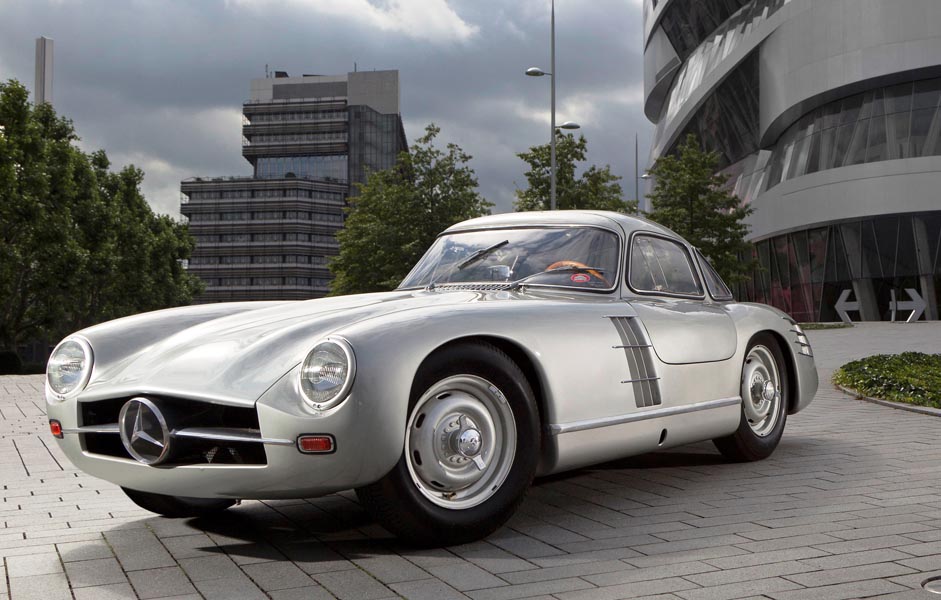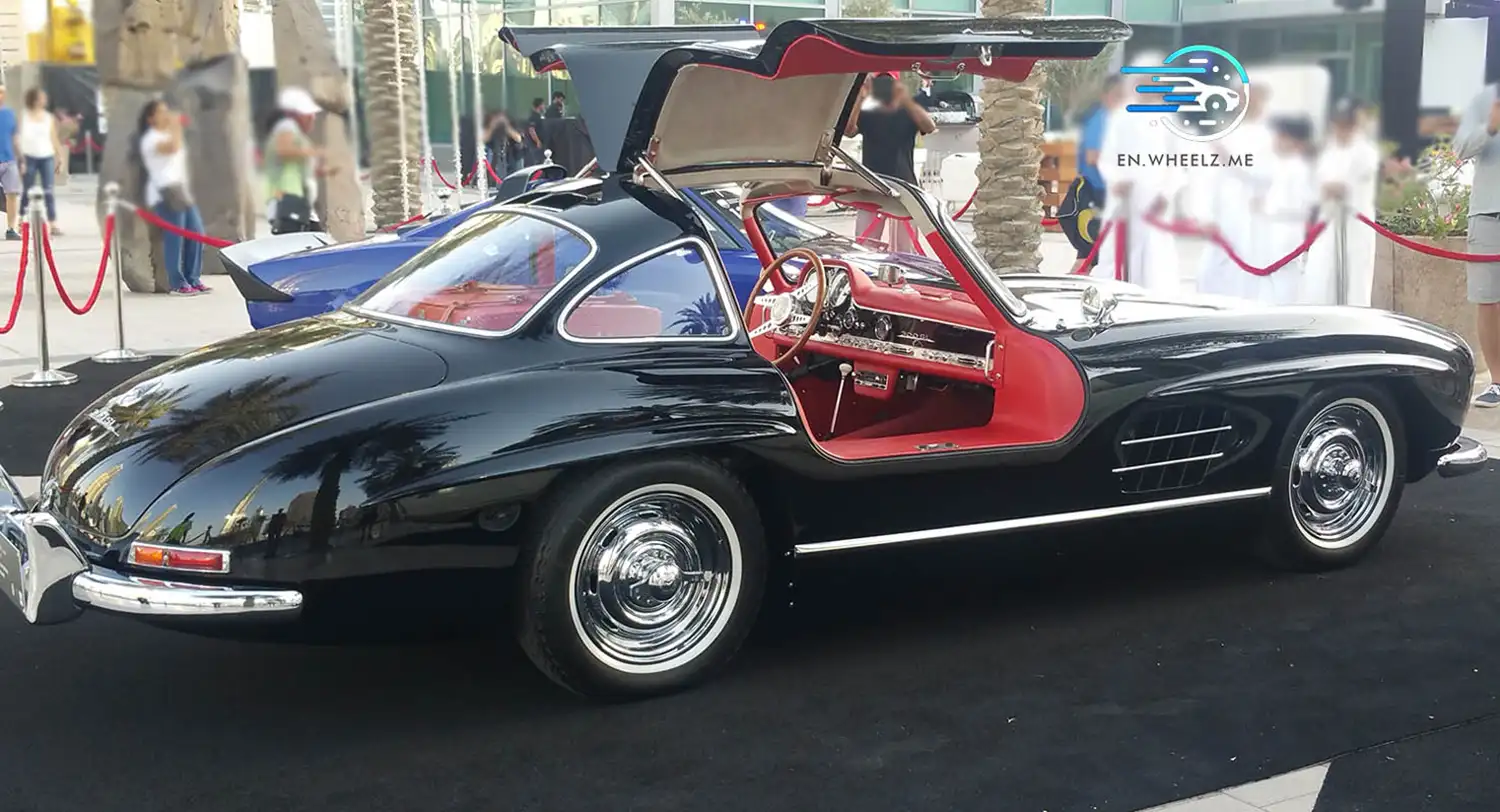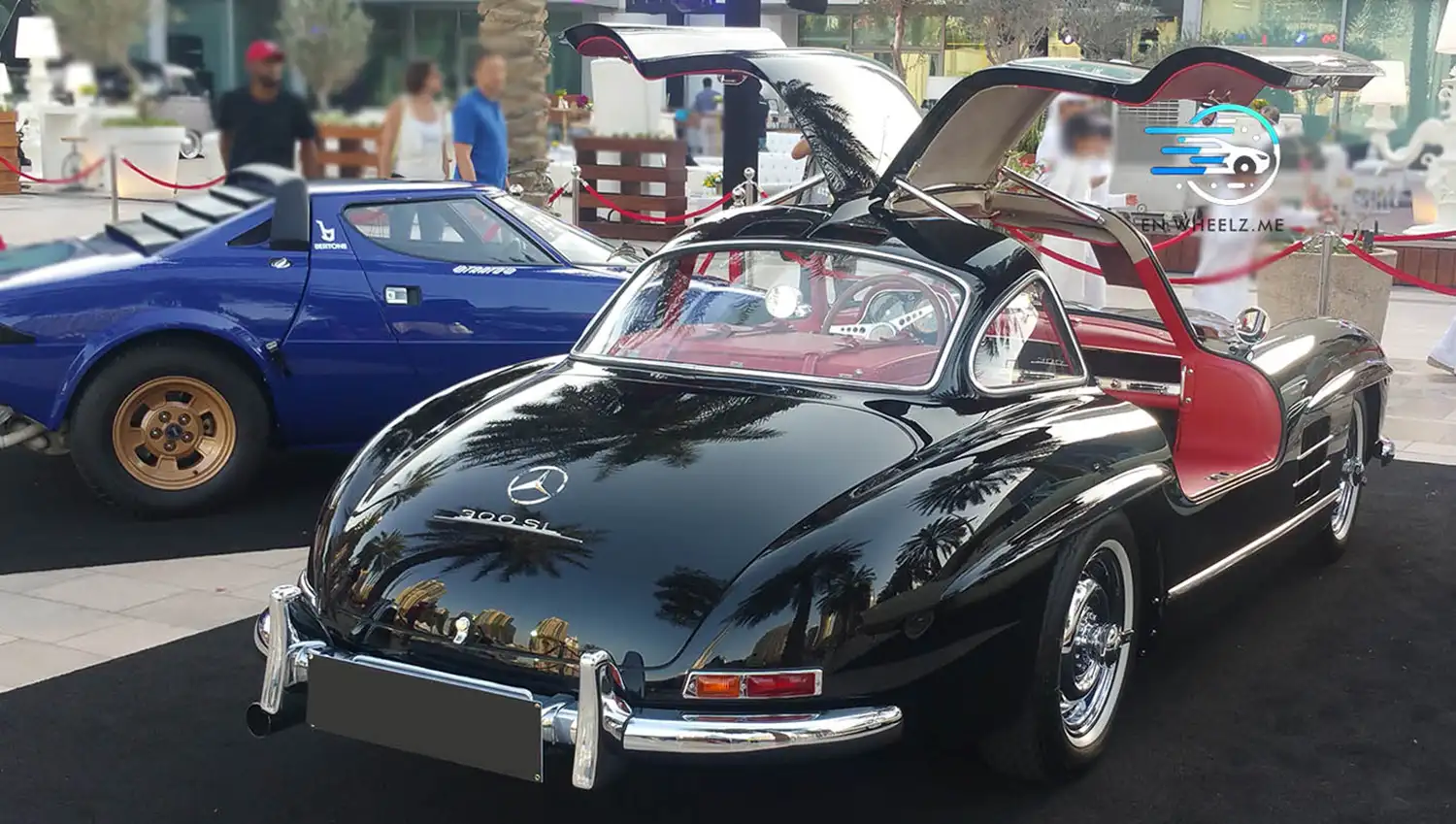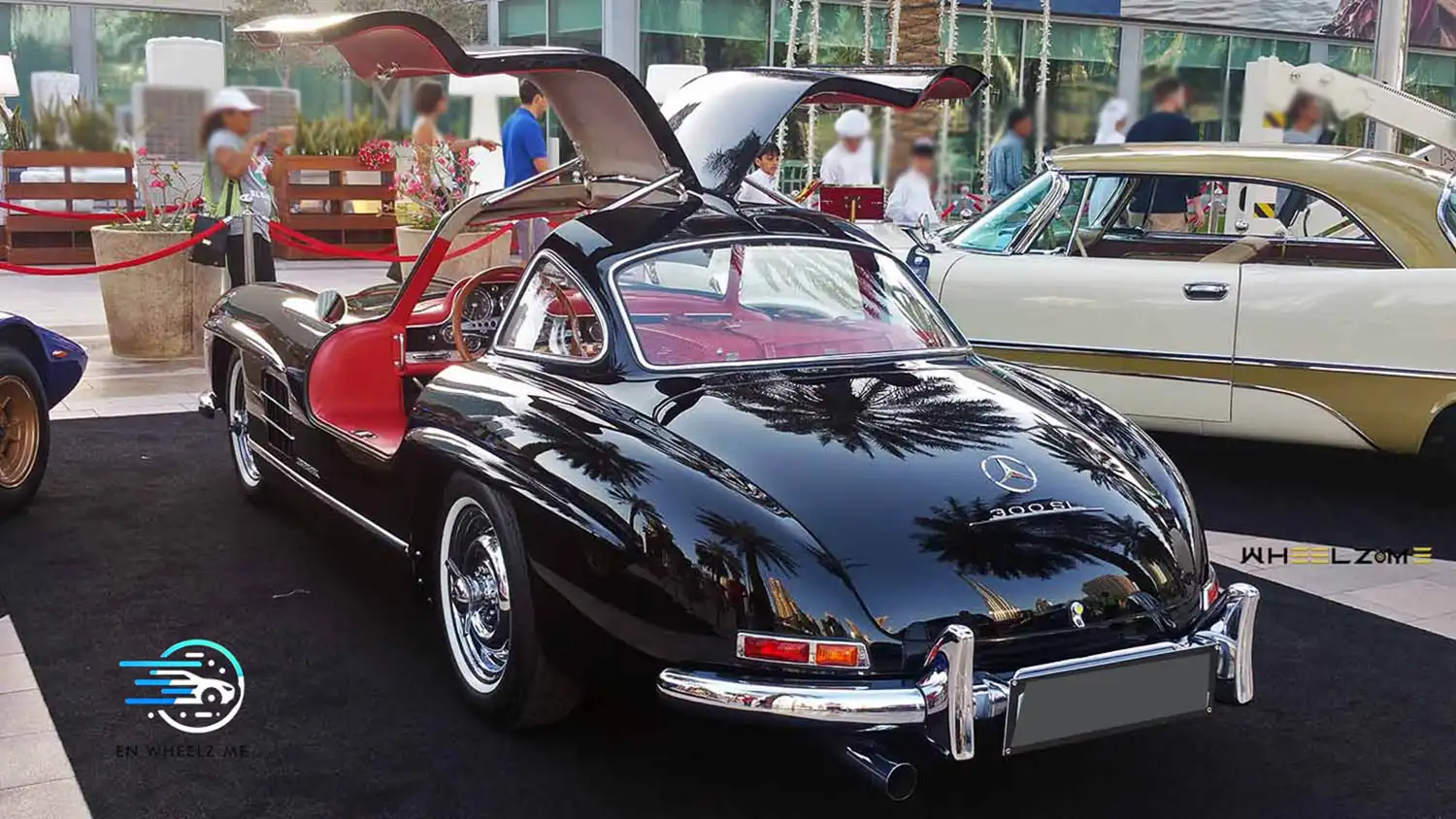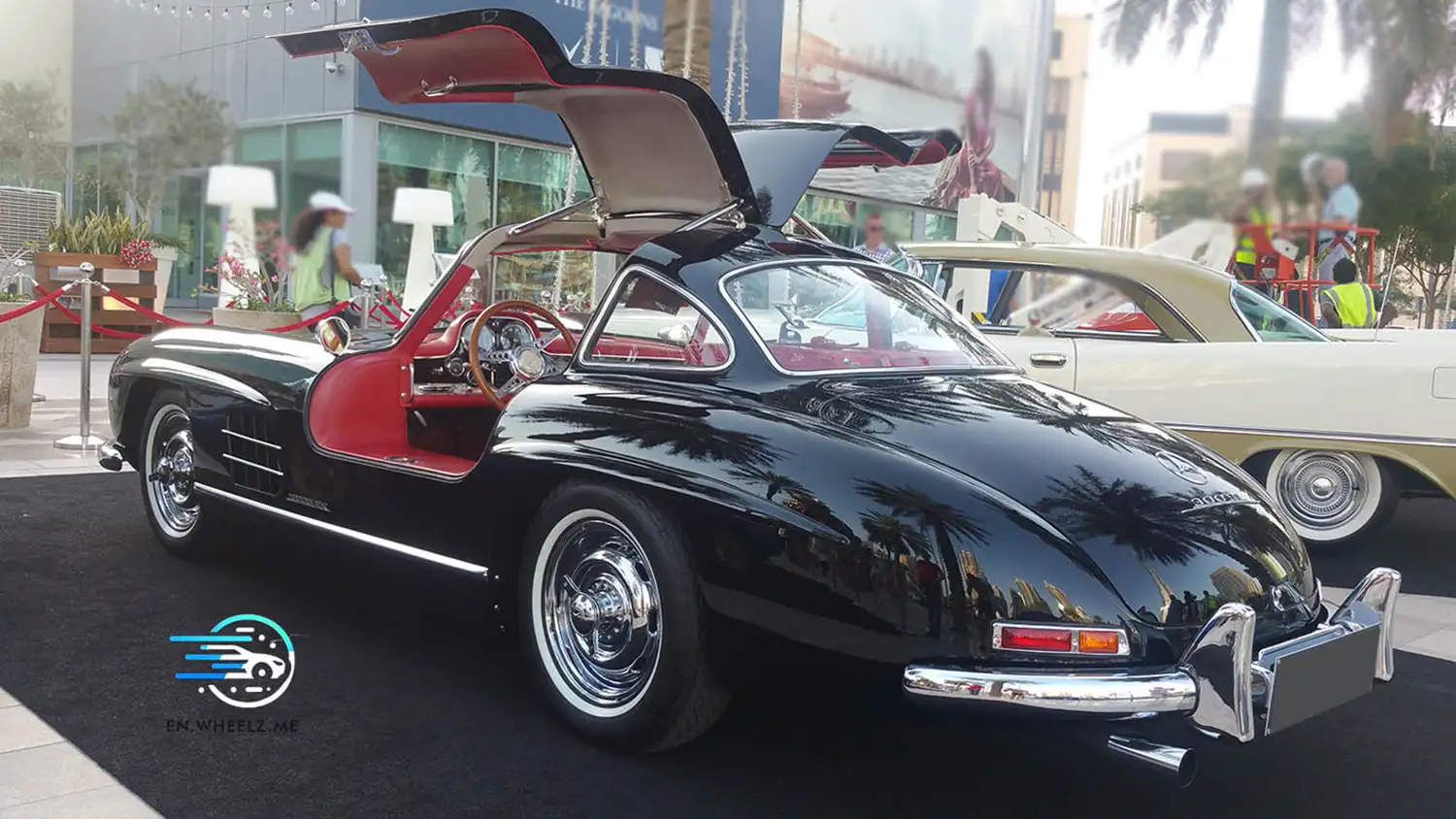
The Mercedes-Benz 300SL, born from motorsport heritage and engineering innovation, stands as a timeless icon in the annals of automotive history. Introduced in the 1950s, this legendary machine captivated enthusiasts with its groundbreaking design, advanced engineering, and exhilarating performance, leaving an indelible mark on the automotive world.
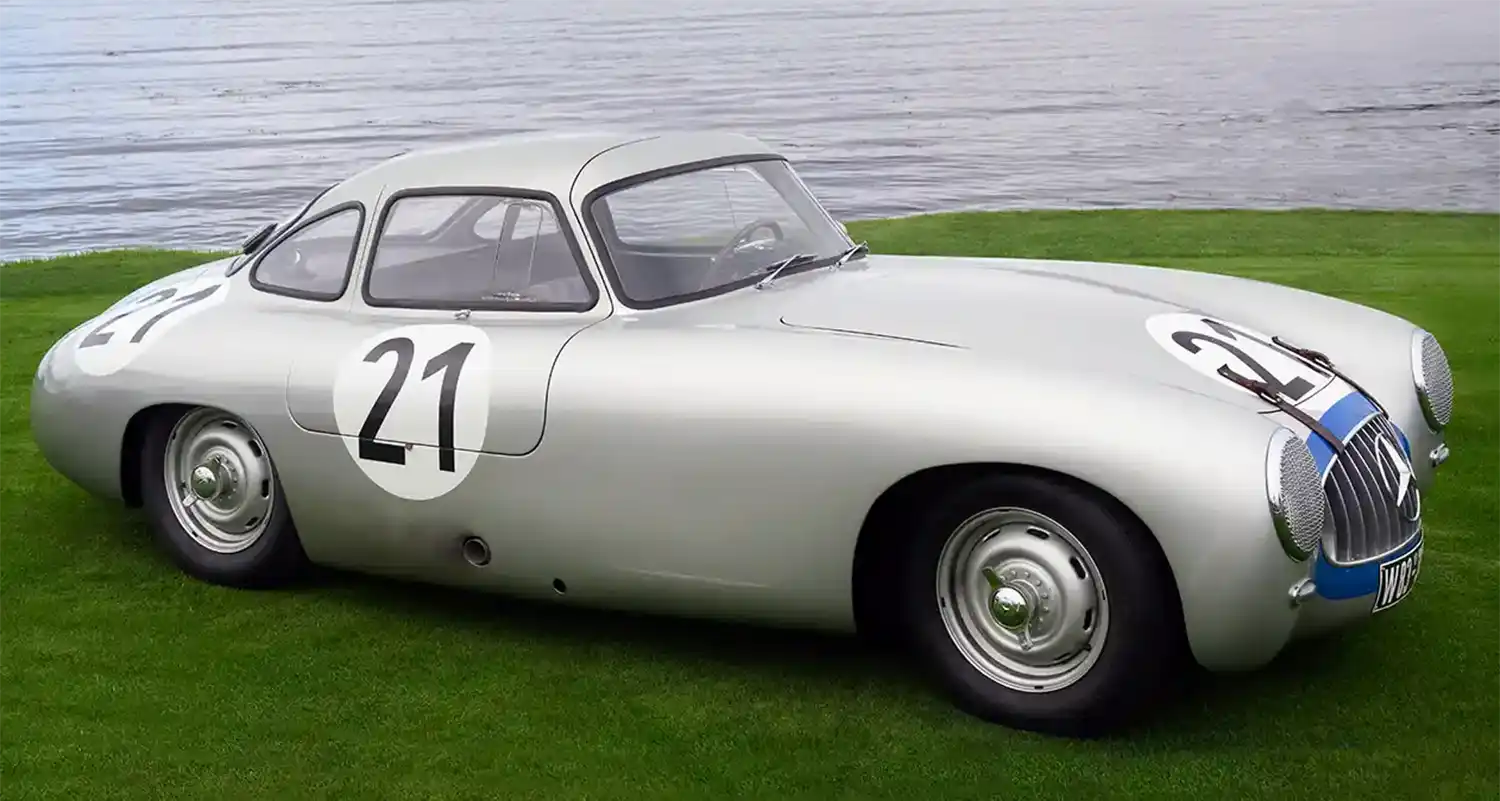
Design and Innovation
Unveiled in 1954, the Mercedes-Benz 300SL wowed the world with its distinctive gullwing doors, a feature that not only added a touch of drama to its appearance but also served a practical purpose by allowing for easier access to the cockpit in tight spaces. Designed by Friedrich Geiger, the 300SL’s sleek silhouette and aerodynamic lines exuded an aura of elegance and performance, setting a new standard for automotive design.
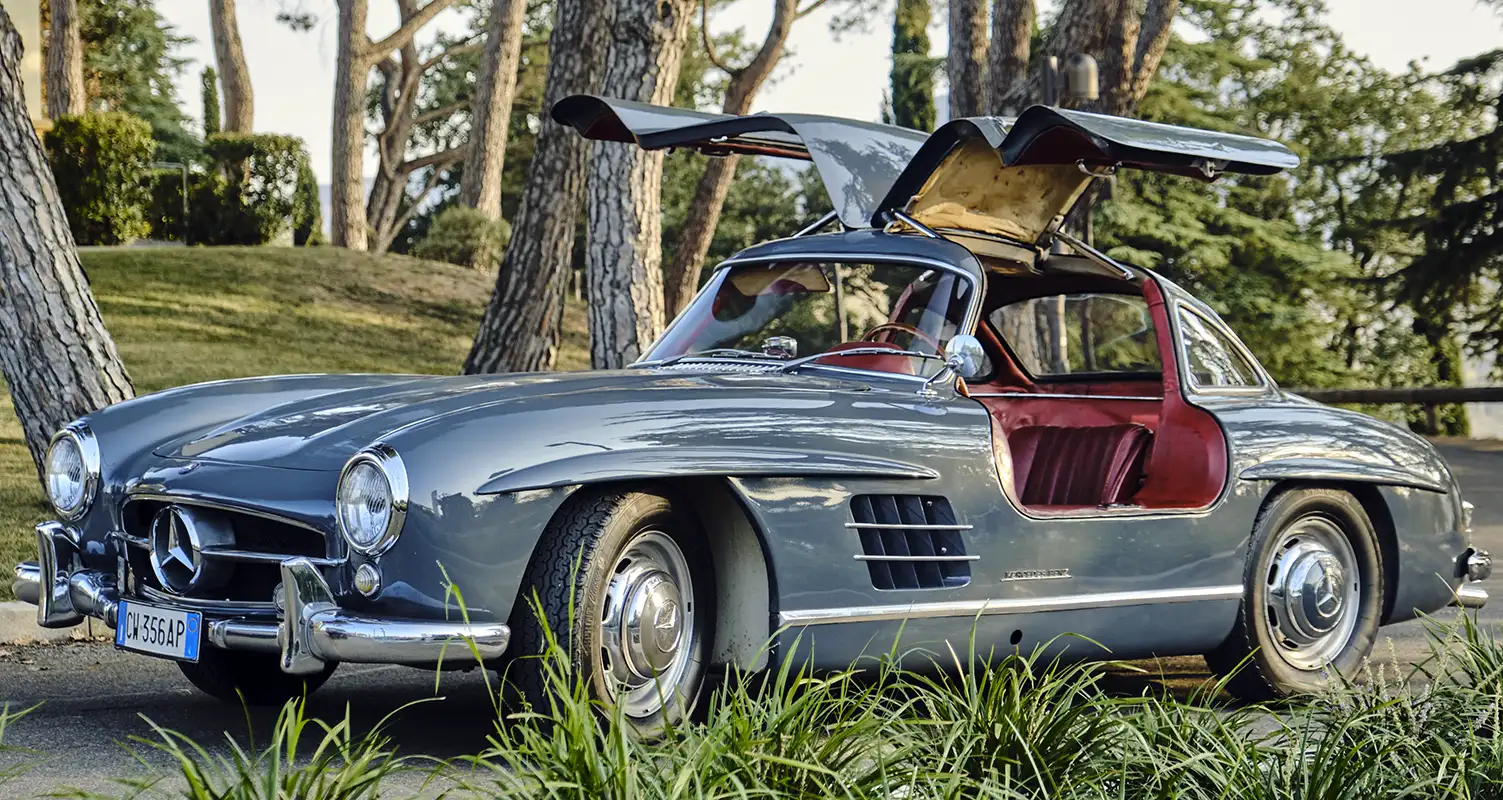
The Mercedes-Benz 300SL earned the nickname “Gullwing” due to its distinctive upward-opening doors resembling the wings of a seagull. This unique feature not only added to its iconic appearance but also made it instantly recognizable and memorable among automotive enthusiasts.
Performance and Engineering
At the heart of the Mercedes-Benz 300SL lies a potent powerplant—a 3.0-liter inline-six engine equipped with Bosch mechanical direct fuel injection, a pioneering technology for its time. This advanced engine produced an impressive output of approximately 212 horsepower, propelling the 300SL from 0 to 60 mph in just under 8 seconds, with a top speed exceeding 160 mph. Mated to a four-speed manual transmission, the 300SL delivered a thrilling driving experience characterized by smooth power delivery and exceptional responsiveness.
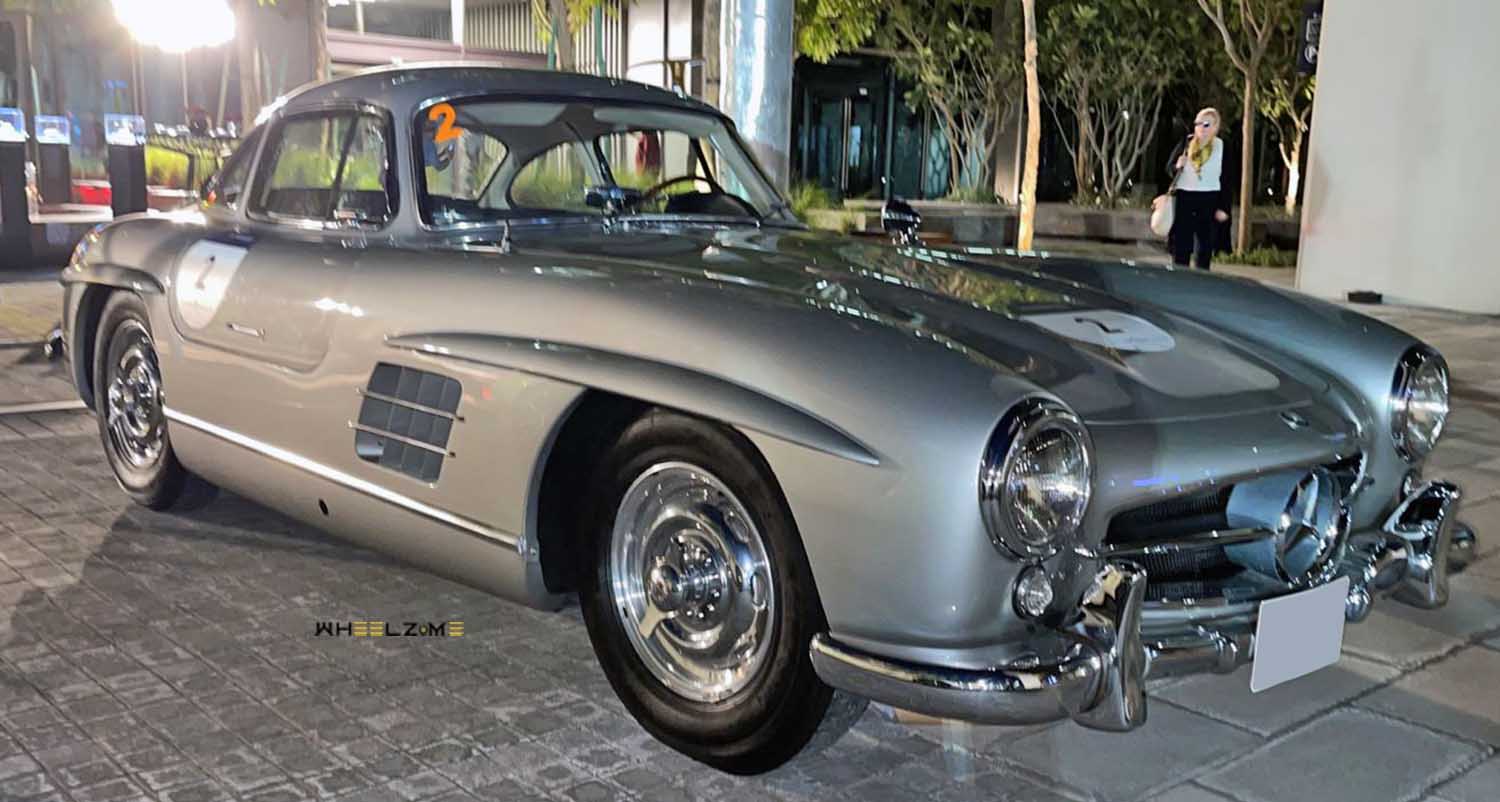
Legacy and Collectibility
As one of the most coveted classic cars in automotive history, the Mercedes-Benz 300SL holds a special place in the hearts of collectors and enthusiasts worldwide. Its limited production numbers, timeless design, and storied racing heritage contribute to its enduring allure and astronomical value. Pristine examples of the 300SL command premium prices at auctions, reaffirming its status as a true automotive icon.

Price
The exact number of original Mercedes-Benz 300SL models, especially the gullwing coupes, remaining today is difficult to determine precisely. However, it’s estimated that around 1,400 to 1,500 units of the 300SL gullwing were originally produced between 1954 and 1957.
Due to their iconic status and desirability among collectors, many of these vehicles have been meticulously preserved or restored, contributing to their continued existence. However, the number of surviving examples may have decreased over time due to accidents, natural deterioration, or other factors.

The price range for the original Mercedes-Benz 300SL, particularly the gullwing coupe, can vary widely depending on factors such as condition, originality, mileage, and provenance. Pristine examples of the 300SL gullwing in excellent condition and with documented history can command prices well into the seven figures, often exceeding several million dollars at auctions.
However, less pristine examples or those requiring restoration may be available for lower prices, typically ranging from hundreds of thousands to over a million dollars.
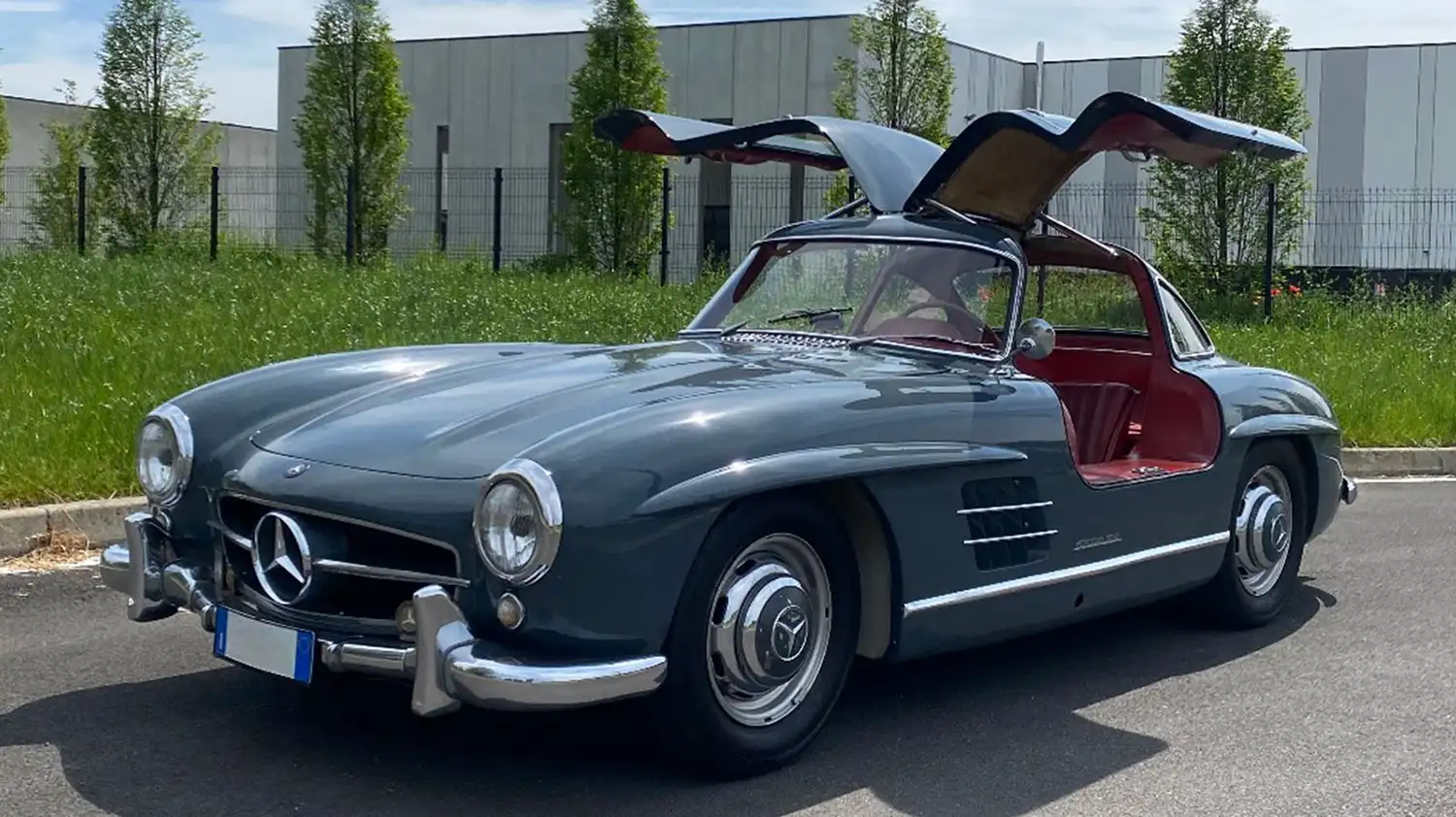
Conclusion
The Mercedes-Benz 300SL represents the epitome of automotive excellence, blending groundbreaking design, advanced engineering, and exhilarating performance into a timeless masterpiece. With its iconic gullwing doors, potent inline-six engine, and legendary racing pedigree, it continues to captivate enthusiasts and inspire future generations of automotive enthusiasts, ensuring its place in automotive history for years to come.

Technical Specifications:
- Engine: 3.0-liter inline-six with Bosch mechanical direct fuel injection
- Power Output: Approximately 212 horsepower
- Transmission: Four-speed manual
- 0-60 mph: Just under 8 seconds
- Top Speed: Over 160 mph / 260 km/h
The Mercedes-Benz 300SL remains a symbol of automotive innovation and excellence, embodying the spirit of adventure and performance that defines the Mercedes-Benz brand.
This article uses material from Chatgpt



